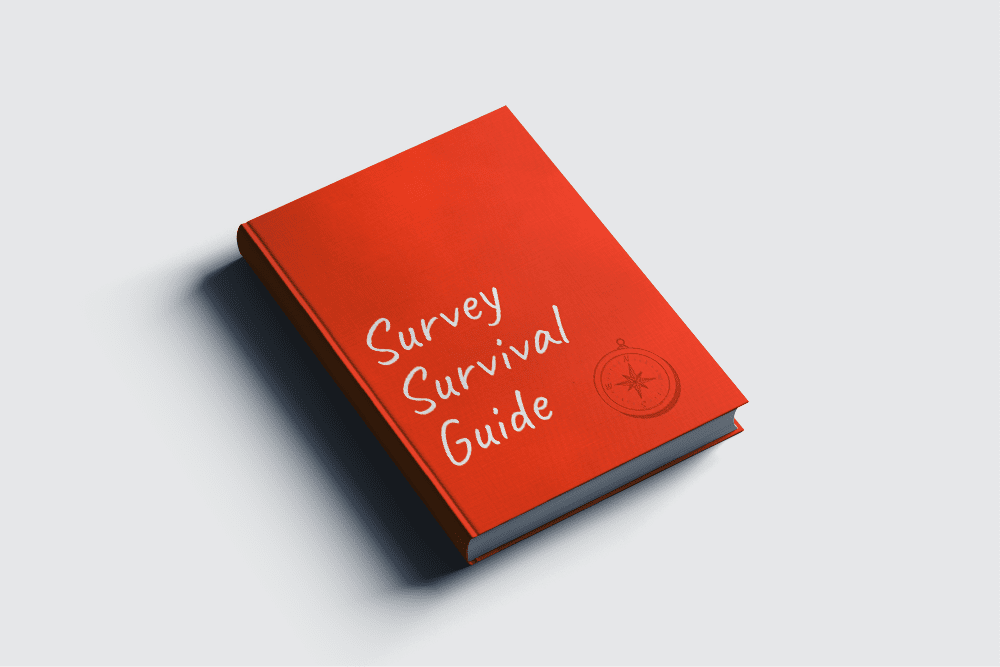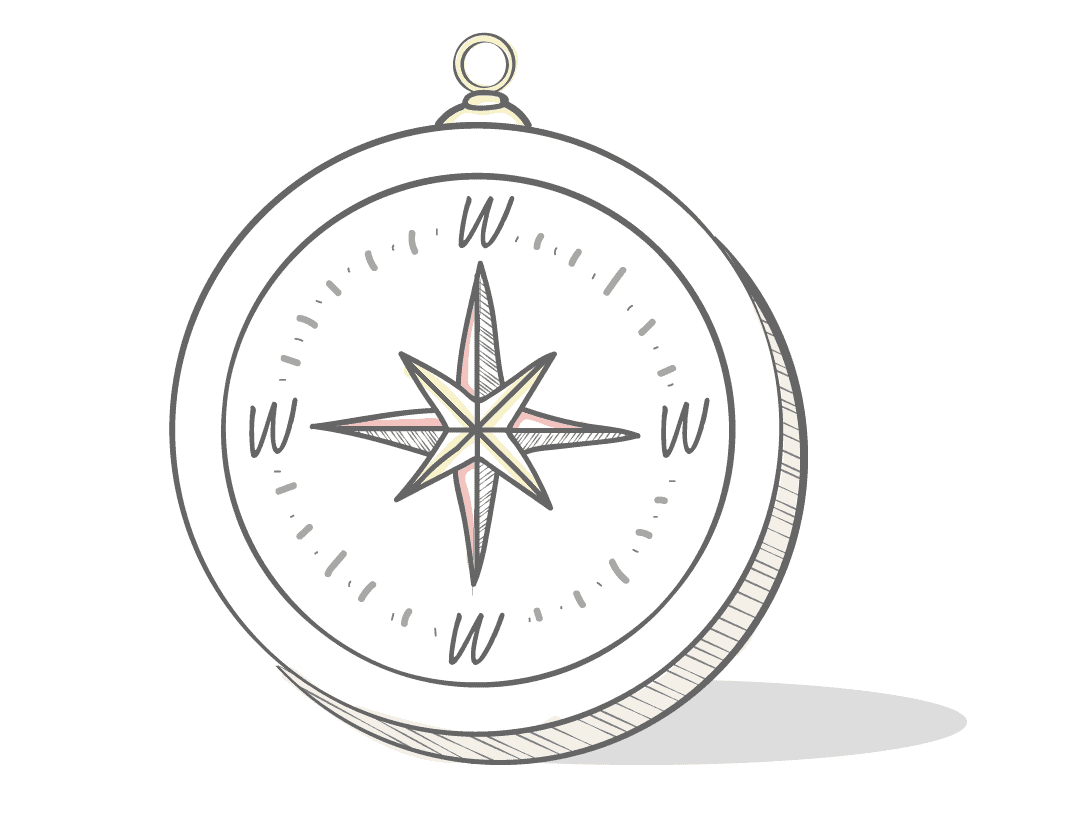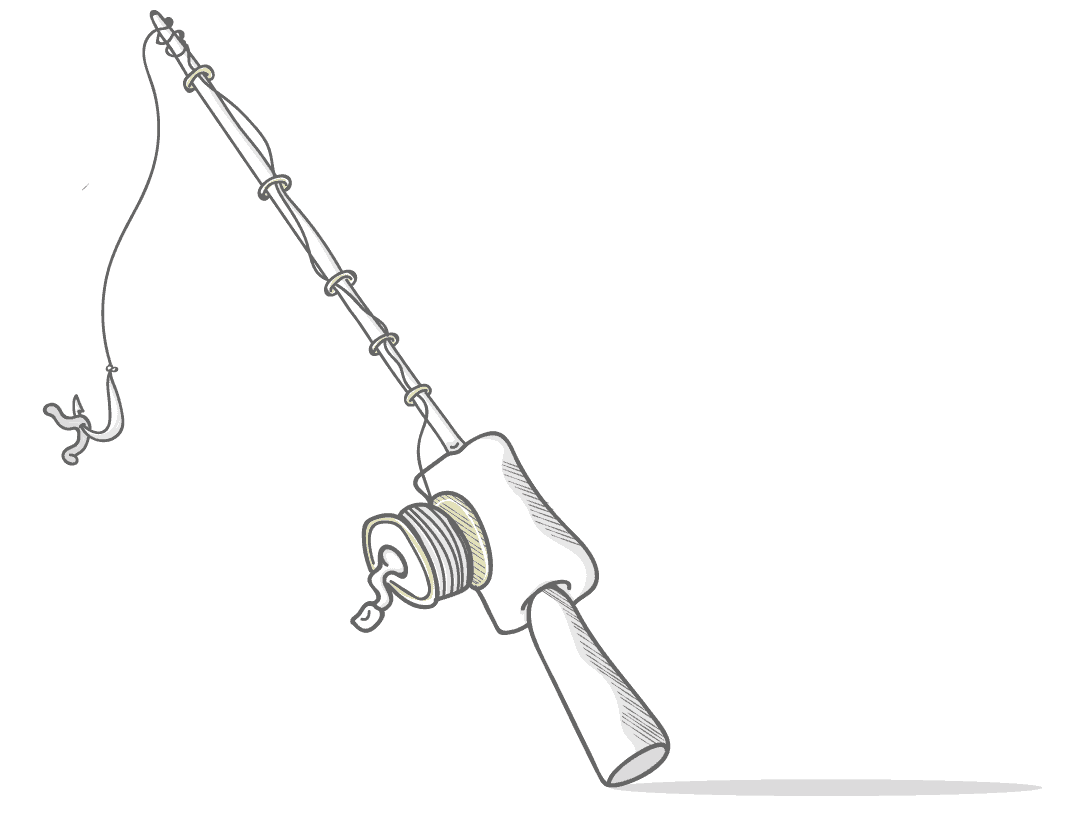We’ve seen a lot of great resources online that discuss all aspects of surveys, in general. However, it’s a lot harder to find anything that covers the unique needs that banks and credit unions face when it comes to building and conducting surveys.
So, we decided to put something together just for financial institutions.
If you need help creating your next survey, crafting questions, or gathering and interpreting responses, our Survey Survival Guide is here to help. Be sure to bookmark this page to take full advantage of our best practices and make your next survey your best survey.

Upgrade Your Survey Skills
Want to become a survey master? Download the full eBook for free today.

Preface
A survey is an extremely powerful tool. It’s also an important part of the data collection process for banks and credit unions. Where transactional data in your core and ancillary data systems can show you the activity of your account holders, surveys can give you insight into how your account holders feel.
This is an important distinction.
Surveys are also a great way to gather data on interests, attitudes, opinions, and issues. That’s the feedback that allows you to take action. Knowing how your employees, processes, and business activities make people feel gives you direct insight into the action you need to take next, which is either:
A. Work to enhance a process that causes a positive feeling
Or
B. Work to correct the issue causing the negative feeling
The Survey Feedback Loop – Surveys can be used to capture a variety of outcomes, but their primary purpose in life is to establish a feedback loop between your financial institution and the people you’re trying to understand better. To start thinking about surveys as feedback loops, here are three different survey use cases you can start tomorrow to make a quick impact at your bank or credit union:
Satisfaction – According to a recent J.D. Power study, “Big banks have significantly improved in overall customer satisfaction.” This isn’t good news for community banks and credit unions. However, that’s where your own satisfaction surveys can come into play. It’s no longer optional to address issues as they’re boiling over. Surveys can help you pinpoint satisfaction problem-areas and get in front of them before they blow up.
Financial Well-Being – A poll conducted by Gallup found that 84% of customers who felt that their banks look out for their financial well-being were also fully engaged. One great way to gain an understanding of an individual’s current financial well-being is to survey them. Surveys allow both you and your customer to uncover potential wins together, while also increasing engagement levels.
Brand Awareness – Surveys can also be used to position your financial institution as an expert among a specific population segment. National and regional banks such as Capital One, U.S. Bank, and Fifth Third Bank have all surveyed local businesses around various topics. They then offer the data up publicly to the media. The end result being increased brand awareness and positioning as an expert among a specific customer segment.
Whether you need to understand your customer or member’s satisfaction levels, their financial well-being, or you’re just looking to build brand awareness among certain sub-groups, surveys can be a terrific engagement tool. Our Survey Survival Guide will help you take your survey game to the next level.
Chapter 1: The Purpose of Your Survey
We’ve talked about surveys being an important way to gather feedback, so let’s talk about how to determine the purpose of a survey before we build it. The purpose of your survey will vary depending on what you want to learn from the respondents. To keep things simple, we’ve broken down the four main questions you’ll need to answer in order to determine a survey’s purpose:

Why do you want to send a survey?
Who should receive your survey?
What type of survey should you send?
When should you send your survey?
The Why – As much as you may want to, it’s important that you don’t skip this step. You must know why you want to send a survey first. If you don’t know why you’re sending a survey, then you won’t really know who you need to send it to, what questions to ask, or even when to send it.
So your first mission is to figure out what you want to know.
Some immediate examples that come to mind around satisfaction include wanting to know the satisfaction levels of new customers being onboarded or wanting to know how a customer’s experience was during their last branch visit.
Why would you want to know this information?
One great reason to understand customer satisfaction levels has to do with process improvement. Surveying brand new account holders provides insight into how your onboarding process meets new customer needs. Sure, satisfaction surveys give you the opportunity to catch unsatisfied account holders before they leave, but the underlying “why” to this type of survey is to identify process gaps in order to make necessary improvements.
Why do you want to send a specific survey?
The Who – Once you know why you’re sending surveys, you need to determine who will receive them. You can think of “who gets a survey” as your audience. You need to determine how many people belong to any given audience.
In the new customer onboarding satisfaction example, we defined the who as totally new relationships. We could just as easily get product specific. For example, you may want to survey new checking account relationships separate from new credit card relationships if you have different onboarding processes for those two different product lines.
With this in mind, you can decide how many people should receive your survey. Would you like to survey every new relationship or a percentage of people who make their way through your onboarding process? As long as you end up with a statistically significant result, the choice is yours.
Who do you want to receive your survey?
The What – Here we get to think about what we’d like to ask. Using your “why” and “who” phases as question guidelines, you can determine the questions that need to be asked and exactly how many questions will be needed to gain the insights that you’re after.
In our example, so far, we’ve decided to narrow things down to totally new checking account relationships so that we can better understand our onboarding process and find ways to improve it. So, we can focus our questions on this “why” and “who”.
Keep in mind that there isn’t a magic number of questions that can guarantee a 100% survey response rate. As a general rule, shorter is usually better when it comes to getting responses. However, shorter surveys can make it difficult to gather all of the data that you’d like to collect. There will definitely be some give and take here.
When you know why you’re sending a survey and who you’re trying to learn from, everything else should fall into place.
Here are some example questions to get you going:
How likely is it that you would recommend us to a friend or colleague?
12345678910
Did the amount of time it took to open your new account meet your expectations?
YESNO
Given your last experience, how would you rate our employee’s helpfulness?
12345678910
What do you want to find out in your survey?
The When –This is where timing and frequency come into play. It’s generally a good idea to look at the questions you’re asking, to determine when those questions should be asked. In the personal checking account satisfaction example, you can provide the survey at a couple different times, depending on the questions you’re asking.
If your questions are about the account opening experience, then you’d likely want to send that survey out closely after the account opening experience. This way, your account opening process is still fresh in the new account holders mind.
If you want to find out whether or not the new account holder would recommend you to a friend, then you should probably wait a couple months before sending that survey. So they’ve had time to truly evaluate their experience with your financial institution.
Sometimes people won’t respond to your surveys, and that’s ok. If the survey recipient chooses not to take your survey the first time, remember that you can always follow-up with a reminder. Just make sure not to send too many reminders for the same survey, as that may come across as annoying and limit your ability to gain future feedback from that relationship.
When should you send your survey?
The Four W’s, Survey Style
When it comes to creating a survey, always know why you want to send it, who it should go to, what survey questions will help answer your initial question, and when is an appropriate time to send your survey. If you keep the why, who, what, and when phases in mind, you’ll be well on your way to developing an informative survey that builds up your feedback loop.

Chapter 2: The Successful Survey Checklist

Now that you’ve mapped out your goals for the survey, it’s time to think about what will make your survey successful. You can think of this as a checklist to go through before sending out surveys. And going over this checklist before sending out a survey can be compared to making a checklist of items you’d need for an adventure in the wilderness. If you’re going on an overnight hike and forget the toilet paper, you could find yourself in a bad situation. Same here.
Fortunately, we’ve made you this Survey Checklist, so nothing important gets left behind.

1. A Clear Title & Branding – You only have a couple seconds to catch the attention of your survey taker, so your title needs to be short, sweet, and to the point. If it’s an email survey, the title should be thought of as your subject line. Make the purpose of the survey clear. Don’t try and bait and switch your account holders…that never turns out well. Telling how many questions are in the survey via the subject line is a bonus that will help open rates as well.
Here are some solid examples of good titles for various bank surveys:
For a Market Reputation Survey, you could use:
1 Simple Question About Your Customer Experience
For a New Account Survey, one option could be:
3 Important Questions About Your New [FINANCIAL_INSTITUTION] Account
Branding in the subject line can be key, because it brings instant recognition and attention. If it is clear that a message is coming from their financial institution, a recipient will likely pay more attention upfront. As an added bonus, try having the survey invitation come from the recipient’s assigned banker or account manager and include your logo and brand colors in the survey’s design.

1. A Brief Introduction –
Now that your subject line has the recipient’s attention, it’s time to explain yourself. This is where you let the recipient know why you’re conducting the survey, the length and expected time to complete the survey, and what will be done with the results. This transparency will result in fewer mid-survey drop-offs because you’ve set expectations up front and made everything crystal clear.
For a Market Reputation Survey (if you only include one question):
Please consider taking a very brief moment to answer just one simple question about your experience with us.
For a Lost Customer Survey:
Please consider taking a moment to let us know why you chose to end your relationship with [FINANCIAL_INSTITUTION]. We respect your time and appreciate your willingness to help us improve our service.

1. Survey Questions – Here are a couple guidelines to follow, when crafting survey questions.
A. Keep It Simple: If answering the questions starts to feel like work, the survey taker is likely to give up. So, keep your questions short, easy to answer, and only present one idea at a time. This way, your questions are clear and easy to answer quickly.
B. Tell a Story: Make sure your questions are organized in a logical order. This makes the purpose of the survey easier for respondents to understand and helps them with their thought process.
C. Check for Question Pitfalls: The next section of this guide lays out the four major pitfalls of question writing that can lead to a biased or unreliable response. Be sure to double check that your questions don’t fall into any of these categories.

1. Survey Responses –
Make sure that your survey responses are worded so that they cover the entire range of possibilities.
A quick example:
How many times a week do you login to your account via our mobile app?
DON’T
12345
DO
0123435+

5. A Thank You – Mind your P’s and Q’s, especially in survey writing. Your account holders are doing you a favor by taking your surveys, and you want to be sure to show your appreciation. A simple, ‘Thank You for Taking Our Survey!’ would suffice, but adding a personal touch goes a long way. Try out this version of a ‘Thank You’ in your next survey:
[FIRST_NAME], thanks for taking the time to complete this survey. Your feedback is very valuable to us. If there is any other feedback you wish to share with [FINANCIAL_INSTITUTION], please don’t hesitate to reach out.
(Feel free to include your contact information and hours of operation.)
Bonus: Include an Incentive/Reward as a ‘Thank You’ – To increase the number of individuals who take the time to complete your survey, think about including an incentive. This is also a great way to build relationships with your account holders. Scroll down to find examples of rewards that financial institutions can offer in the Survey Execution section of this guide.
Chapter 3: The 4 Pitfalls of Survey Writing
As you continue to navigate your way through the survey process, there are a couple common pitfalls you should know about. Refer to these tips to recognize the four most common pitfalls and remember how to avoid them:
Leading Questions

A question that prompts or encourages the desired answer.
Framing the question in such a way that the survey taker is directed towards a certain answer will not lead to accurate feedback. You may get the answer you want, but inaccurate data won’t do you any good in the long run.
Example:
Leading Question: How dumb is it to kick a hornets nest?
Better Question: Should you kick a hornets nest?
Bank Survey Example:
Leading Question: Did the short amount of time it took to open your new account meet your expectations?
Better Question: Did the amount of time it took to open your new account meet your expectations?
Leading Questions

A question written in such a way that the respondent is forced into an answer that doesn’t accurately reflect their true opinion.
Example:
Loaded Question: Where is your favorite spot to hunt?
For someone to answer this question, they are automatically implying that they have been hunting, which is untrue of many individuals. Therefore, this is considered a loaded question.
Bank Survey Example:
Loaded Question: How would you rate your online bill pay experience?
To avoid getting bad data back in your responses, there are a couple solutions. One way is to ask a preliminary question and, if you are using a survey tool that is capable, have a follow-up question ready for a positive response.
Better Question:
1. Are you enrolled in online bill pay?
YESNO
If they answer NO move on to the next question topic.
If they answer YES ask:
2. How would you rate your online bill pay experience?
12345678910
Another solution is to only send this survey question to individuals known to be enrolled in online bill pay. Core iQ has the capability to segment audiences in this way so you can better personalize your survey questions.
Double-Barreled Questions

A question that addresses more than one issue, yet allows for only one answer.
When you write a double-barreled question you’ve combined two questions into one. This forces the survey taker to either answer one question while neglecting the other or answer two questions at once. Both of those options are bad for your response data.
Only one issue should be addressed in each survey question, so the responses are clear.
Example:
Double-Barreled Question: How useful will this map be for inexperienced and experienced hikers?
Bank Survey Example:
Double-Barreled Question: How would you describe your feelings toward the volume of email and the volume of print mail you receive from us?
This question should be split into two separate questions for clear results since these are two very different channels of communication. You’ll want to measure the results separately because the survey taker could have different feelings about email and print mail.
Absolute Questions

Writing in absolutes basically forces the survey taker into a corner – and their feedback can’t really be considered useful.
These types of questions will likely involve Yes or No answers and include words like: always, never, all, every, etc.
Example:
Absolute Question: Do you always check to see if your flashlight has fully charged batteries before a hike?
YESNO
Banking Survey Example:
Absolute Question: Do you always let your financial institution know when you’ll be traveling on vacation?
YESNO
Better Question: Two simple ways to avoid this pitfall are to remove the absolute phrase from the question – in this case “always” – and to offer more than one option. Here’s an example:
When you travel on vacation, how often do you inform your financial institution?
EVERY TIMESOMETIMESRARELYNEVER
Chapter 4: The Execution
You are almost a survey survival guide master. You’ve got your purpose. You’ve got your survey structure. You know what to avoid. Now, it’s time to bring all these tips together and execute your survey.

Getting Recipients to Take Your Survey
It’s not easy to get people to take your survey. They’re busy, may mark your survey as spam, or they simply may not want to take a survey. One way you can pique a recipient’s interest is to offer them a reward. For financial institutions, this can include an instant reward, like a piggy bank, or an entry into a sweepstakes, like a chance to win a $100 gas card. In fact, offering a reward increases a survey’s response rate by around 50%, on average.
Having said all this, you don’t have to offer an incentive. Using the survey tips above, like keeping a survey short, to the point, and using easy to understand questions, can
It’s Okay to Send Follow-Up Emails
Regardless of which route you take, recipients may not take your survey. If this happens, you can always send a follow-up email a few days, or even a week, after they received your survey. Just remember not to send too many follow-ups. That increases your chance of getting blocked.


Examining Survey Results
You’ve sent out your survey, and the results are coming in. This means it’s result time. Here are a few tips and areas to focus on when examining your survey results:
- Look for trends across different respondents. For example, are people satisfied overall with their account sign-up process? Should you make any adjustments?
- See if your respondents are likely to refer your financial institution, products/services, etc. to someone else.
- Compare how people are rating your financial institution, product sign-up process, products/services, etc.
- Make sure to immediately respond to any negative responses, whether that’s via a phone call or follow-up email.
- Even compare how different groups responded to particular questions. For example, how did people ages 18-25 answer your survey questions compared to those who were 30-50?
Time to Take Action
While you’re examining your survey results, you may come across some disgruntled respondents. That’s okay. In fact, these dissatisfied responses can help improve your processes, products/services, and more. When you come across a dissatisfied response, make sure to check it out.
If the dissatisfied response was from a multiple choice, Likert scale, or Yes/No question, it’s harder to know why that person was dissatisfied. That doesn’t mean you should disregard those, however. If your survey gave them the option to explain why they were dissatisfied, then you’ll have a better idea of how to address their concern. No matter how the dissatisfied response was given, you need to follow-up with the respondent.
Reaching out to a disgruntled respondent via phone or email will help strengthen relationships because it shows that you care. It’s also a great opportunity to find out why they were dissatisfied. Over the phone or via email, you can drill down into specific feedback, which is gold. Just like with your survey, if an upset customer does not respond to your first outreach attempt, you can always follow-up.
Once you’ve received their feedback, check and see if any trends are starting to form. If there’s an area with a lot of complaints, it may be time to pay that area a visit. And remember that once a problem has been identified and resolved, it’s a good practice to continue to monitor the process through future survey responses and continue to make tweaks as necessary.

Epilogue: Some Starter Surveys for You
Congratulations! You now have everything you need to start making compelling surveys that people will want to answer. From understanding your purpose to crafting questions, building an overall survey structure and getting responses. Nice work.
As a special reward for making it all the way through the survival guide, we wanted to share some of our road-tested surveys that have received tens of thousands of responses. Just click on the graphic below, and enjoy.

Feel free to copy or modify any of these surveys and survey questions to meet your unique needs.
Where Core iQ Comes Into Play
Our communication platform allows bank and credit union marketers to capture survey feedback against every customer or member record. If you’re interested in taking the leg-work out of receiving customer feedback, then learn more here or schedule a demo.

Upgrade Your Survey Skills
Want to become a survey master? Download the full eBook for free today.


